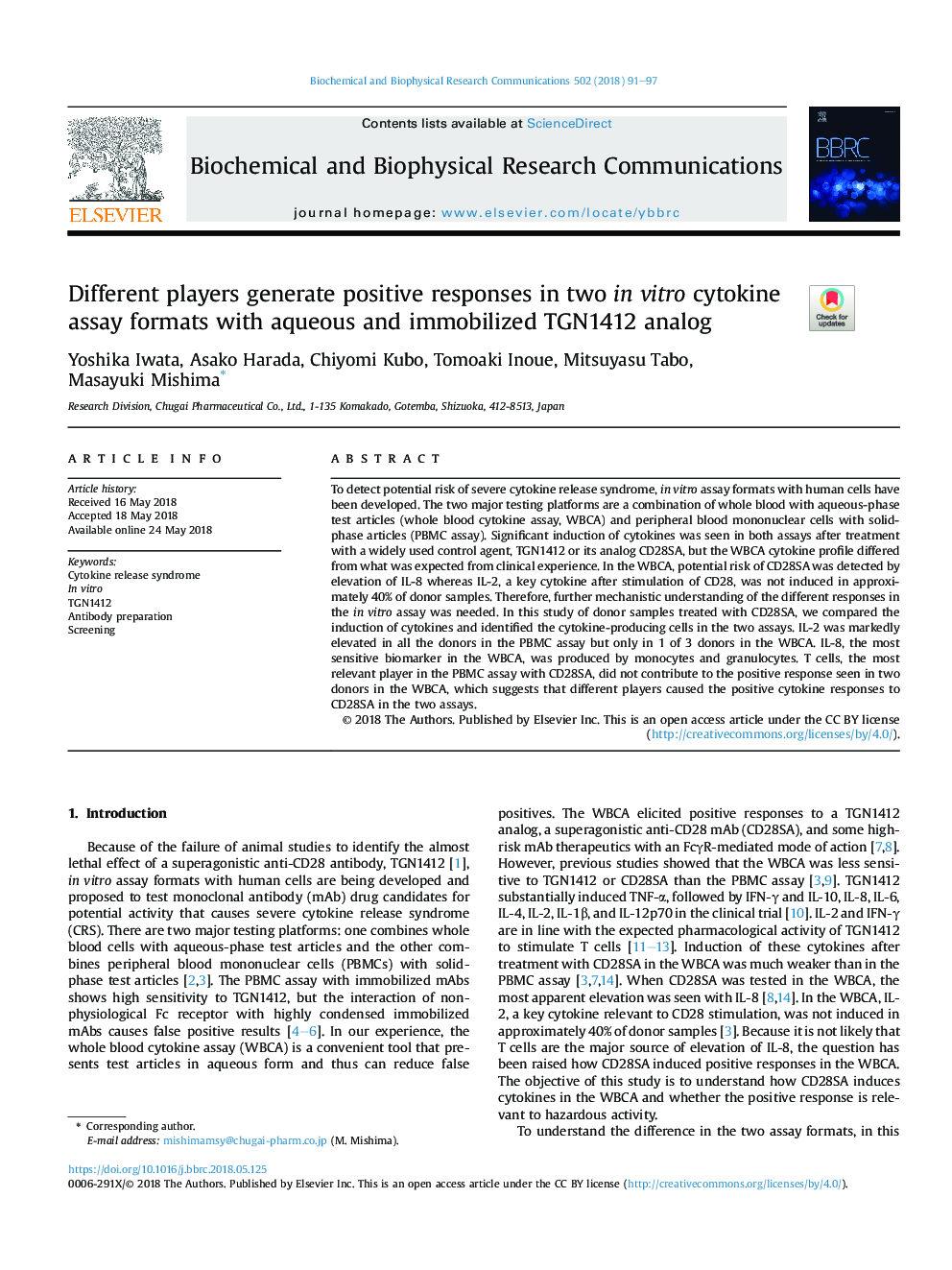| Article ID | Journal | Published Year | Pages | File Type |
|---|---|---|---|---|
| 8292462 | Biochemical and Biophysical Research Communications | 2018 | 7 Pages |
Abstract
To detect potential risk of severe cytokine release syndrome, in vitro assay formats with human cells have been developed. The two major testing platforms are a combination of whole blood with aqueous-phase test articles (whole blood cytokine assay, WBCA) and peripheral blood mononuclear cells with solid-phase articles (PBMC assay). Significant induction of cytokines was seen in both assays after treatment with a widely used control agent, TGN1412 or its analog CD28SA, but the WBCA cytokine profile differed from what was expected from clinical experience. In the WBCA, potential risk of CD28SA was detected by elevation of IL-8 whereas IL-2, a key cytokine after stimulation of CD28, was not induced in approximately 40% of donor samples. Therefore, further mechanistic understanding of the different responses in the in vitro assay was needed. In this study of donor samples treated with CD28SA, we compared the induction of cytokines and identified the cytokine-producing cells in the two assays. IL-2 was markedly elevated in all the donors in the PBMC assay but only in 1 of 3 donors in the WBCA. IL-8, the most sensitive biomarker in the WBCA, was produced by monocytes and granulocytes. T cells, the most relevant player in the PBMC assay with CD28SA, did not contribute to the positive response seen in two donors in the WBCA, which suggests that different players caused the positive cytokine responses to CD28SA in the two assays.
Related Topics
Life Sciences
Biochemistry, Genetics and Molecular Biology
Biochemistry
Authors
Yoshika Iwata, Asako Harada, Chiyomi Kubo, Tomoaki Inoue, Mitsuyasu Tabo, Masayuki Mishima,
